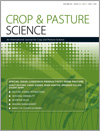Tall fescue (Festuca arundinacea (Schreb) Darbysh.) has the potential to become a useful component of irrigated dairy pastures in northern Victoria owing to its high dry matter (DM) production compared with perennial ryegrass. However, tall fescue is not widely grown because its grazing management is perceived as difficult. In October 2010, a tall fescue–white clover pasture was established and irrigated. In September 2011, six grazing-management treatments were imposed over 3 years, involving grazing: at 1-leaf stage; at 2-leaf stage (1.5-leaf stage during spring); at 3-leaf stage (2.5-leaf stage during spring); at intervals based upon days between grazings ranging from 15 days in October–December to 60 days in winter; at intervals as above except for 21 days in October–December; and at intervals approximating that of a well-managed perennial-ryegrass-based pasture . Measurements included pre- and post-grazing pasture mass, nutritive characteristics, botanical composition and plant frequency.
Pasture consumption from the treatment grazed at the 3-leaf stage was >3.5 t DM ha–1 year–1 (30%) greater than from the three most frequently grazed treatments. However, crude protein content was 1–3% DM units lower when grazed at the 3-leaf stage compared with the two most frequently grazed treatments. There was no effect on estimated metabolisable energy or neutral detergent fibre contents of the pasture on offer. Differences in pasture composition between the pastures grazed at the 3-leaf stage and those most frequently grazed emerged over time and were most conspicuous in the third year, with a greater plant frequency (79% v. 66%) and tall fescue content (61% v. 40% DM) and lower weed content (14% v. 28% DM).
From the study, a grazing regime for tall fescue based on the 3-leaf stage appears promising because it produced the most DM over the experiment. A disadvantage of this regime was the need for an extra mowing each year. The practicality of this approach to grazing tall fescue needs to be tested at the whole-farm level.





